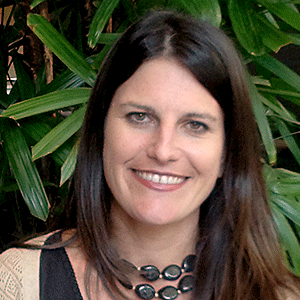 Sonya Barsness, Revisionary Gerontologist
Sonya Barsness, Revisionary Gerontologist
Sonya Barsness Consulting, LLC
I like to run. I’m pretty sure that, when I am running, people around me think I am one of those workaholic types who can’t put the phone down for a second. “What is wrong with this woman,” they say. “She is running around talking into that phone – she can’t even take a break from her phone long enough to just run. Poor woman.”
I want to set the record straight, running voyeurs. You see, when I run, my brain runs. And I have to catch the elusive thoughts that are running through and out of my brain, because I will otherwise lose them. So, I run around with my phone, and I periodically talk into it to record my thoughts. So stop worrying about me, running voyeurs. I have work/life balance, trust me.
Now that I have explained myself, here is the result of one of my running musings. Time will tell if it is interesting, or just the result of a lack of oxygen.
I have a dream. I want to see a paradigm shift in the way we care for each other as we age. In particular, we need to change care systems (like nursing homes and assisted living but also other types of care systems) to communities where people can LIVE well, and the focus on their medical care is supportive (perhaps secondary?) to their LIVING rather than medical care being the goal in itself.
If a person who has grown older needs various supports, healthcare communities come up with a plan for that person, often called a service or care plan. They are primarily medical or healthcare services, like what type of medication a person needs and when, what type of help they might need with everyday personal tasks like bathing or dressing. It is all important.
However, this becomes the blueprint for a person’s existence. What I mean by this is that a person’s life might entirely be made up of, and driven by, these care tasks. This is what we intend to do for this person for their remaining time. These plans can be tinged by a sense of maintenance, of keeping people alive, but not people LIVING. This is why elders have told me they feel like death plans.
Can we try something different? How about we come up with LIVING plans, instead of death plans. What does this mean?
Think of yourself. If you had to create a plan for what you wanted your life to look like, for how you want to live, what would it say? What do you want to see happen for yourself? I am sure it would not say, “I would like to take showers, eat food, take my medication, and just keep doing that until the end.”
Maybe it is not effective to simply ask an elder, “What do you want to do with your life?,” although this is a valid question. Sadly, this might be perceived as silly by elders themselves, because it is not something we ask elders very often, and elders become unaccustomed to thinking this way. Perhaps we first need to create trust with, and build confidence in, elders that it is acceptable (actually, expected and encouraged) to want things from their lives, to look towards the future, to want something more than a life of maintenance.
I have seen elders become nihilistic and institutionalized, not necessarily because they are living in institutions, but because they have become confined in their thinking. Elders might not dare to hope or dream anymore. Why? Do they not think things are possible for them? Do they feel this is not their right “anymore”? How do “we” in the field of aging possibly discourage hoping and dreaming for the future? There is much emphasis on reminiscence and life review, but do we pay enough attention to who elders are now, who they want to be, and what they want from life?
Elders need people jumping up and down for them. They need to be encouraged to hope and dream. To seek and ask for those things that drive their lives.
These things might not be big things, although they could be. It might be that an elder’s hopes and dreams are to be still, to appreciate the small things, to quietly think, and to watch. They are no less important than an elder’s wishes to take a hot air balloon ride, climb a mountain, meet Oprah, paint, write, travel, be with family, etc. Perhaps an elder wants their LIVING to be about sharing what they have learned, and supporting others in their LIVING. An elder’s hopes might even include planning for death, a death that is reflective of their wishes. These are important desires.
It is not the nature of these desires in a LIVING plan that is the point. It is that we need to be finding out what they are, starting from a place of what is important to people. THEN, we can determine what supports a person needs to carry out their LIVING plan. THEN, we can figure out what medications a person needs/wants and when they take them. THEN, we can figure out what type of help a person needs during their day to accomplish the things they want. THEN, these important medical and health services can enable the LIVING.
We can start by being curious about elders, finding out who people are and what is important to them, and building upon that. Let’s let them know that their LIVING is important and we want to hear their plans for it.
Reprinted from Sonya’s new blog, Being Heard: The Voice of a Revisionary Gerontologist. To read more go to: www.beingheard.blog.


